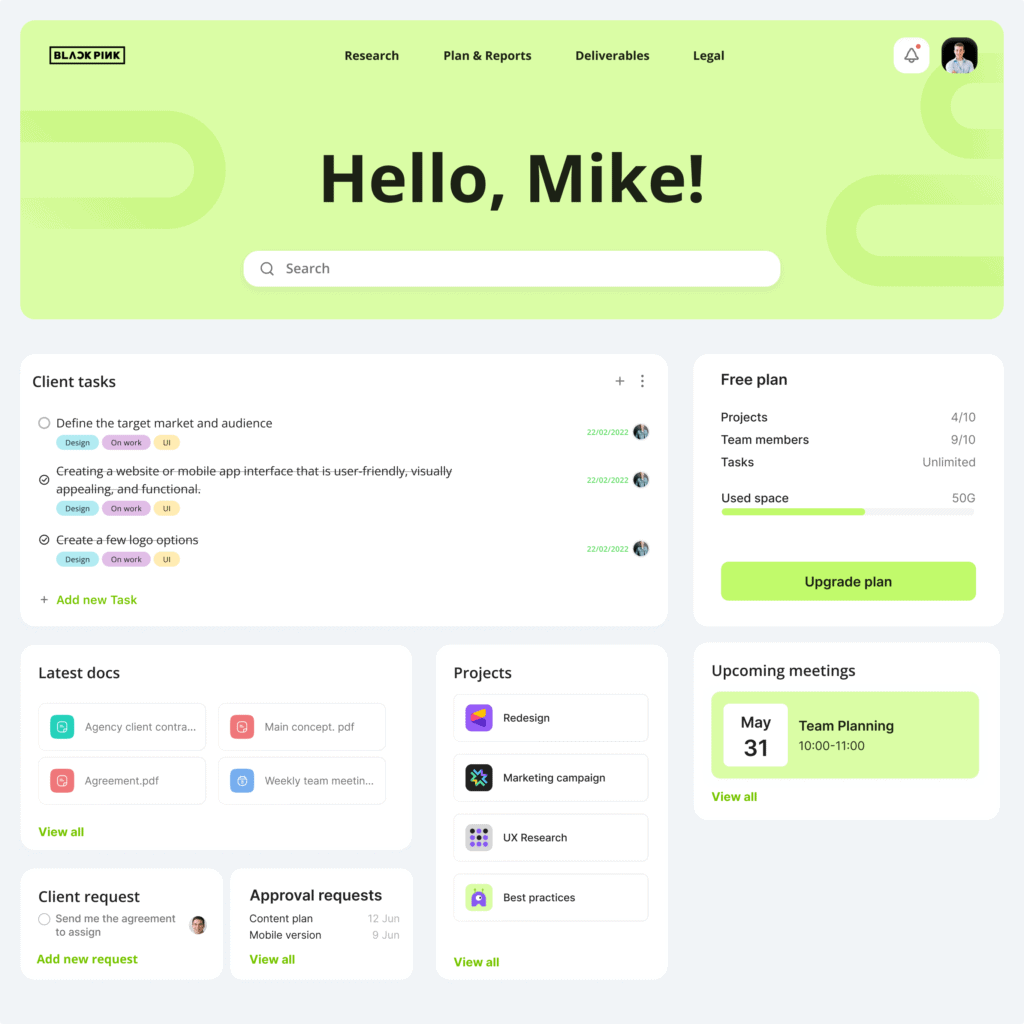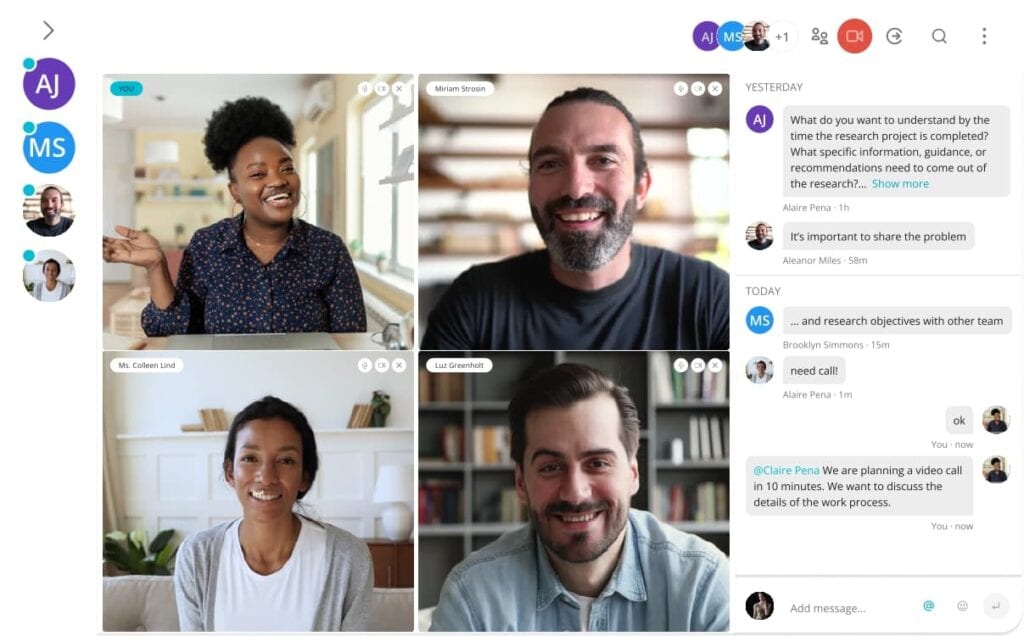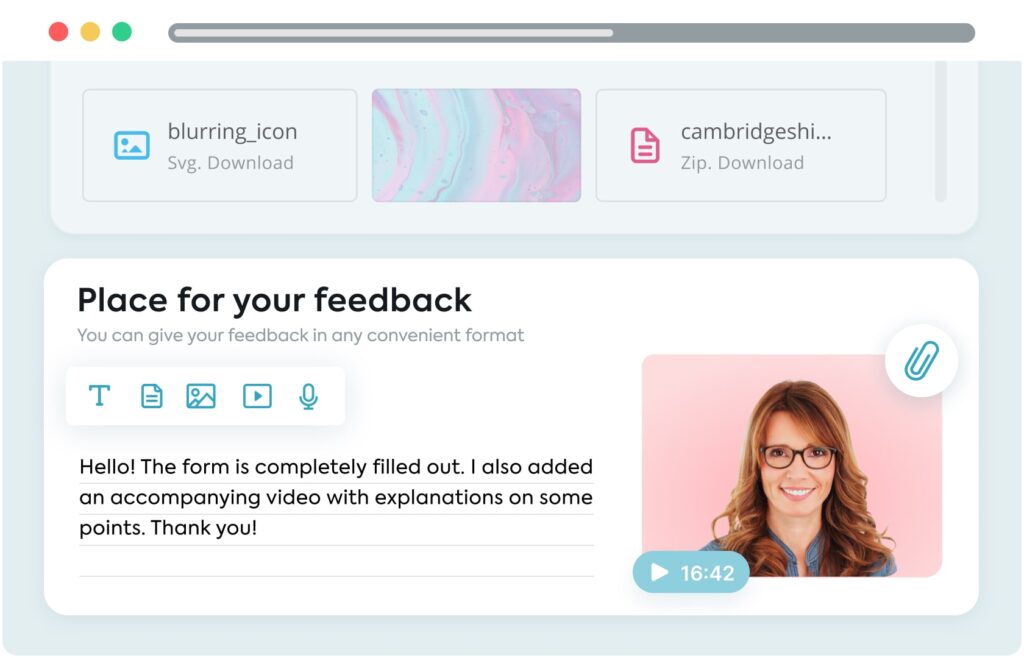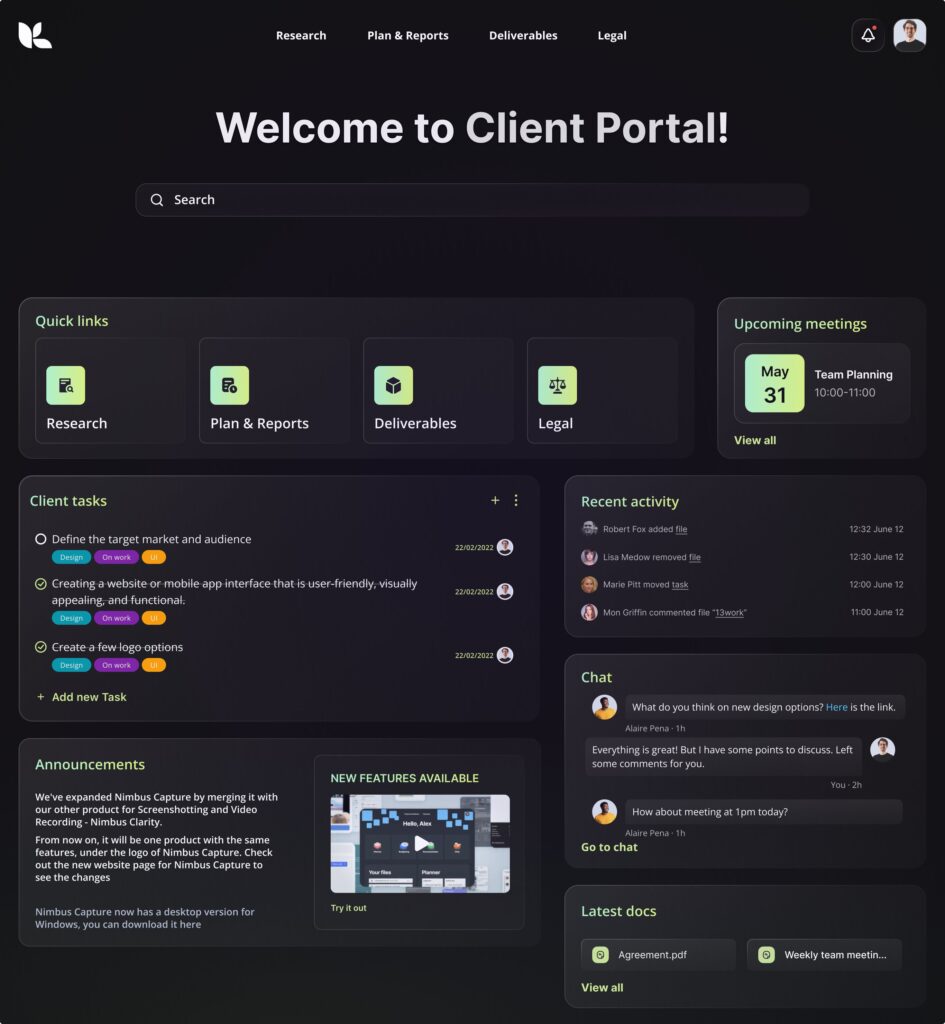
The Ultimate Guide to Finding the Best Customer Education Software
- 11 Min read
Dive into customer experience optimization with our experts
Book a demoToday’s highly competitive markets require customers to receive real value and exceptional experiences in exchange for brand loyalty. You must give each of your customers an unforgettable experience from the moment they land on your website or app all the way through to when they part ways. Otherwise, they could become frustrated and leave immediately for something else.
Customer experience optimization has become an essential strategy in marketing and customer service departments, yet marketers remain confused over its meaning and scope.
In this blog post, we’ll go over what customer experience optimization entails and some strategies you can employ to increase engagement and build brand loyalty across your customer base.

Customer experience optimization is a continuous process that seeks to understand your customers and deliver amazing experiences across your various touchpoints. Customer experience differs from user experience by including more than just interactions between mobile apps and websites—such as delivery drivers, store atmosphere and customer service interactions—and their respective customers.
The main goal to optimize your customer experience is to increase lifetime value, loyalty and advocacy among your customer base. In order to do this successfully, businesses need to understand exactly what customers desire or require from products, services and processes before designing them accordingly.
Customer experience optimization can be challenging as customer demands evolve over time. Therefore, it should be treated as an ongoing process instead of just an initiative; businesses need to continuously gather customer feedback and use it as the foundation for improving service offerings.
Customer experience optimization involves close cooperation among various departments within a company. Marketing, sales, customer service and product development must all collaborate closely in order to provide customers with positive initial interactions at every touchpoint and make informed decisions about what to optimize to deliver the best customer experience.
Modern consumers expect fast service, plenty of options and personalization at every touchpoint in their digital journeys—in fact, 86% are willing to pay more for an excellent experience. Therefore, customer experience optimization should play an essential part in any successful business’s online presence.
Customer experience optimization assists companies by aligning business goals with customer expectations to craft the ideal customer journey. If your brand wants to maximize potential business outcomes, its focus must be placed on every stage of the customer journey and tailored toward meeting customers’ expectations, needs and desires.
Customer experience optimization gives businesses an important tool in connecting with and understanding customers as they come into your store, but in today’s online market environment, most new customers to a brand remain anonymous at first. Customer experience optimization gives businesses the following:
Boosted loyalty – an optimized customer experience encourages customers to stay engaged and choose your brand over competitors.
Increased revenue – customers who were delighted with their purchases are more likely to repeat business and thus boost revenue.
Word-of-mouth advertising – offering customers excellent experiences will lead them to share positive word of mouth about your brand with their friends and acquaintances.
Enhanced brand reputation—focusing on customer experience optimization can help to establish your company as a leader who is customer-centric.
Customer experience optimization is key to unlocking long-term success in today’s competitive environment. By prioritizing customer satisfaction, businesses can foster lasting relationships with customers, increase loyalty and make sure their brand is always at the top of customers’ minds.

Use the following strategies to give your clients a better customer experience optimization:
First of all, make sure your customer experience begins with customer-centricity. Customers are the backbone of any successful business. They purchase your products and services, keeping your organization alive. Therefore, making customer experience at the core of your customer engagement strategy is essential.
What does “customer at the center” mean? It means understanding what customers feel, their needs, preferences and pain points before designing products and services to meet those requirements seamlessly and positively at every touchpoint.
Customer experience optimization should become part of your organization’s culture. Embed customer-first mentalities into all levels of employees to emphasize its significance for creating positive experiences for your customers. A great choice is to encourage cross-functional collaboration for comprehensive customer experience optimization.
Understand the journey of your customers. Customer experience optimization experts design the best strategy from outside in, through the lens of your customers. Yet, there is a large disconnect between what consumers want and what companies provide. Consider some numbers. Over 80 percent of customers expect that brands will let them select a method to follow up with previous engagements. Yet only 37 percent of contact centers believe customers are really concerned about this. Basically, customers are looking for a few key things. To be recognized and remembered is the first priority. Remember the feeling you had when a worker at a coffee shop remembered your name and your favorite way to drink your latte? This is what we are talking about. They also want to have the option of choosing or feeling as if they have a choice. With this in mind, keeping your customers happy is not difficult. What should your next move be? With the purpose of gaining insight into your customers’ demands and expectations, you should analyze data collected from previous interactions with them.
Tracing customers on their journeys will enable you to identify areas for improvement and develop strategies to enhance your customers’ experience. Gaining more insights by listening in through surveys or social media pages will provide you with a deeper understanding of customer behaviors, attitudes and triggers. You can use those result numbers to understand what works best for your customers and what needs some improvement.
To optimize customer experiences holistically, businesses must understand their user journey map. An essential aspect of customer experience optimization campaigns involves grasping this basic blueprint. Thus, user journey mapping must form part of any comprehensive experience optimization efforts.
Customer journey maps are visual representations that depict customers’ interactions over time with your organization through various channels and point out main touchpoints between initial contact and completion of purchase. They give an encompassing picture of customer experience, showing customer pain points, needs or other key moments customers experience along the way.
As soon as customer experience starts, businesses need to be proactive in meeting customer expectations. In such a circumstance, using journey mapping as a guideline for creating positive customer interactions may help.
It will also make it easier for your employees to keep brand touchpoints relevant to the goals of your users—whether they’re crafting copy for a landing page, managing marketing channels or posting on social media platforms. Personalizing every touchpoint turns new customers into happy customers.
This is an old saying, but it’s true: customers want to feel like individuals and not just a number. Personalization is a must if you want to improve relationships with your customers.
It’s a classic to use first names when sending emails. Real personalization efforts involve much more than this. It is about interacting with each customer individually, wherever and whenever you meet them. Attributed in part to an omnichannel marketing strategy that employs technology for seamless, personalized interactions across channels. This success is also possible through responding promptly and courteously to messages posted and comments left by your customers on social media platforms—in turn, creating an experience they won’t forget! You can even personalize your website and the content you serve your customers by using their interests and browsing data to make maximum relevance for each visitor. The final goal is to make them feel special!
As part of your customer experience optimization efforts, customer data analysis should form the backbone of all decisions. That is why your next important step in customer experience optimization is to track metrics. The most popular are Net Promoter Score, Customer Satisfaction Score, Customer Effort Score, Customer Lifetime Value or Average Order Value. You could also leverage information gleaned from websites or mobile applications about customer interaction, such as people abandoning shopping carts or those using your search tools. Once this analysis has taken place, you will quickly be able to identify areas needing improvement and begin targeting these accordingly.
With an effective database in place, it becomes much simpler to observe customer behavior both individually and overall trends—this knowledge will inform and direct any optimization efforts at digital customer experience.
Customer data can provide key insight into common pain points that customers experience. For instance, frequently searched terms may signal subjects where customers would like additional knowledge or resources. They also help you better understand user interactions on your site and their effect on the entire customer journey—is there one page where customers spend the most time, or do they require switching pages in order to locate what information they require?
Pattern analysis allows businesses to uncover customer preferences. You can tailor touch points along the customer journeys and understand what motivates customers to purchase something from you. Your insights gained from these patterns provide the basis for developing customer experience optimization hypotheses and strategies for A/B tests.
When customers are forced to wait for issues to be resolved, they become frustrated. Make sure that your customer support team is readily accessible to avoid such a situation.
Life chat can be a good place to begin. This allows customers to contact you when they need help or more information. It also empowers agents to provide instant solutions. In fact, the American Marketing Association determined that live chat offers a 300% ROI with conversion increases up to 20%!
In addition to live chat, implementing customer self-service options such as a knowledge base or FAQ (Frequently Asked Questions) section on the website can help customers find answers to their queries quickly. This can reduce the load on customer support teams and free up resources to focus on more complex queries to analyze customer behavior on the website and identify areas for improvement in self-service options.
Digital customer experience optimization isn’t aimed at the web only. You need to provide a consistent experience throughout every platform your consumers are using. That includes mobile devices as well.
Statista conducted a study in which nearly half of respondents stated they spend around five or six hours each day using smartphones. Thus making it likely they interact with you via this channel, expecting a smooth mobile customer experience when doing business via their phones.
Here are a few strategies to help your website achieve mobile responsiveness:

Listening and acting upon customer feedback are two integral parts of success in business. Carefully reviewing responses shows customers that businesses care and strive to give a superior experience.
Although listening to the customer is vastly important, paying attention to what customers are saying and collecting feedback is important in the way that it is done. Collecting data on customer feedback can be done through various ways, such as surveys, focus groups and social media channels.
The reason why businesses are able to identify areas to improve their services and products is a result of using feedback to optimize customer experience. By showing the customers that you appreciate their feedback through these implementations, customers feel they are valued.
Consistency in the messages you send to your customers will help build a good reputation and customer loyalty for your business. But remember that message can have a wide meaning. You can use it to describe content for your website, advertise on Instagram or have a chat with a customer. Suppose you communicate on your website that your company prides itself on optimal customer experience. You should be able to direct clients to speak with an employee of your company. This helps the customer feel that high level of quality. The customer must feel this quality immediately if your social media advert communicates an immediate contact.

Streamlining teamwork, delivering personalized experiences, collecting real-time data and providing frictionless client communication are all possible thanks to FuseBase (formerly Nimbus).
FuseBase (formerly Nimbus) serves as a robust collaboration platform tailored for businesses prioritizing customer relationships. It will help keep your customers happy due to its seamless communication channels, responsive support features and intuitive interface designed to cater to their needs.
Starting right from the outset of business relationships, our platform enables team-client interactions through its client portal in an effective and seamless fashion. In order to optimize your customer experience as much as possible, this portal features one-link access and clear navigation with simple menus for seamless use. In case any issues arise during their stay on our platform, chat support or self-service solutions such as knowledge bases or FAQ sections are always at hand for quick resolutions.
The client portal is a perfect way to save time on customer data collection, too. reate surveys to gather feedback and understand customer needs more clearly. In-portal analytics allows you to observe customer behavior patterns on the platform. It will help identify what they view most, when they do it, how often and from which device. You can then use FuseBase AI to process this information and generate personalized proposals for each customer.
Also, easily update your team with customer data and feedback from our collaborative features. Analyze customer behavior indicators and discuss metrics results using chats, comments and @-mentions. SuperDocs allows your team to document all customer touchpoints together and build journey maps in one place for easier customer experience optimization ideas.
Take advantage of the chance to make your digital presence shine! Start to optimize your customer experience today with FuseBase.
Optimize your customer experience with FuseBase!
If there’s one thing that all businesses need to implement, it’s customer experience optimization efforts. Companies that understand the importance of this process have a chance to achieve a great competitive advantage, as excellent customer experiences facilitate customer acquisition and turn potential customers into repeat ones.
Gaining insights on your customer data, a complete understanding of how your customers interact with your business and regularly gathering their feedback are all essential components to identify areas that need some upgrades and, as a result, optimize the customer experience.
While this analytical and improvement cycle process is time-consuming, the impact it can make to increase customer satisfaction and loyalty and consequently, your business goals and the bottom line, is profound. Remember, the journey to optimizing customer experience is an ongoing process—but a journey well worth undertaking.
Found it useful? Share the article with your community
Get weekly tips and insights on how to grow your business